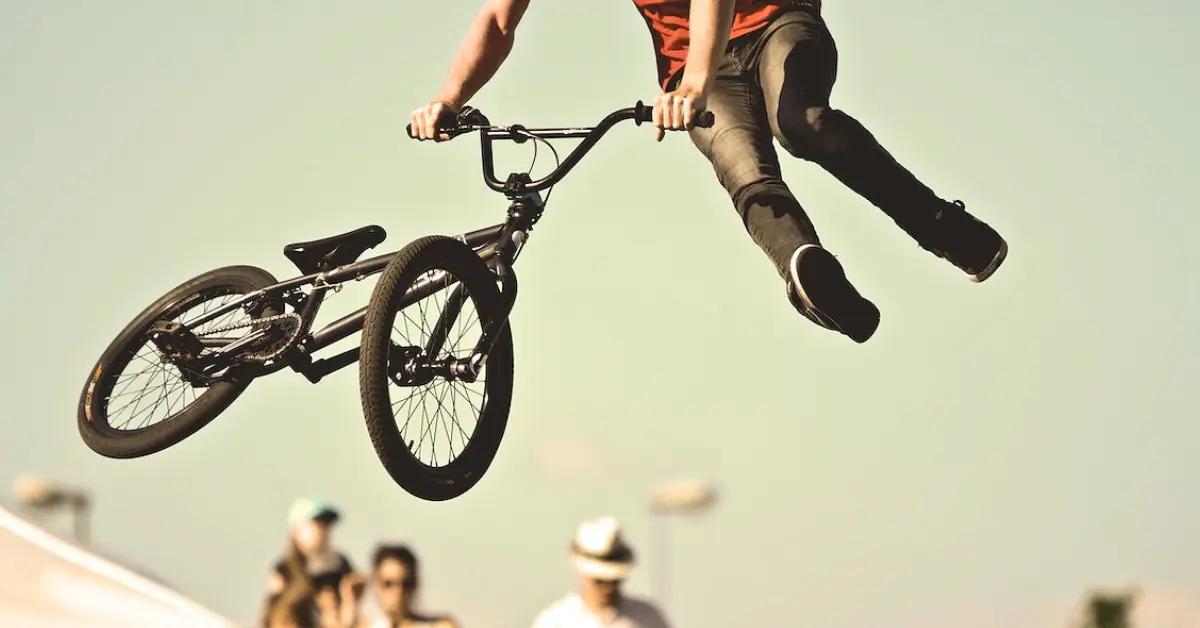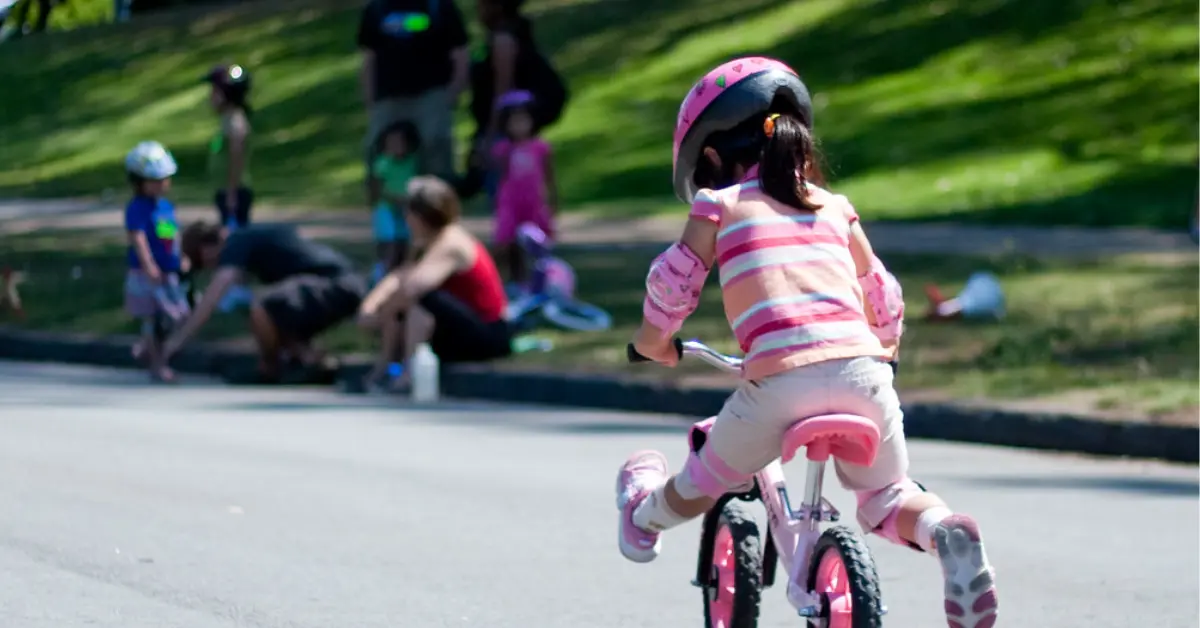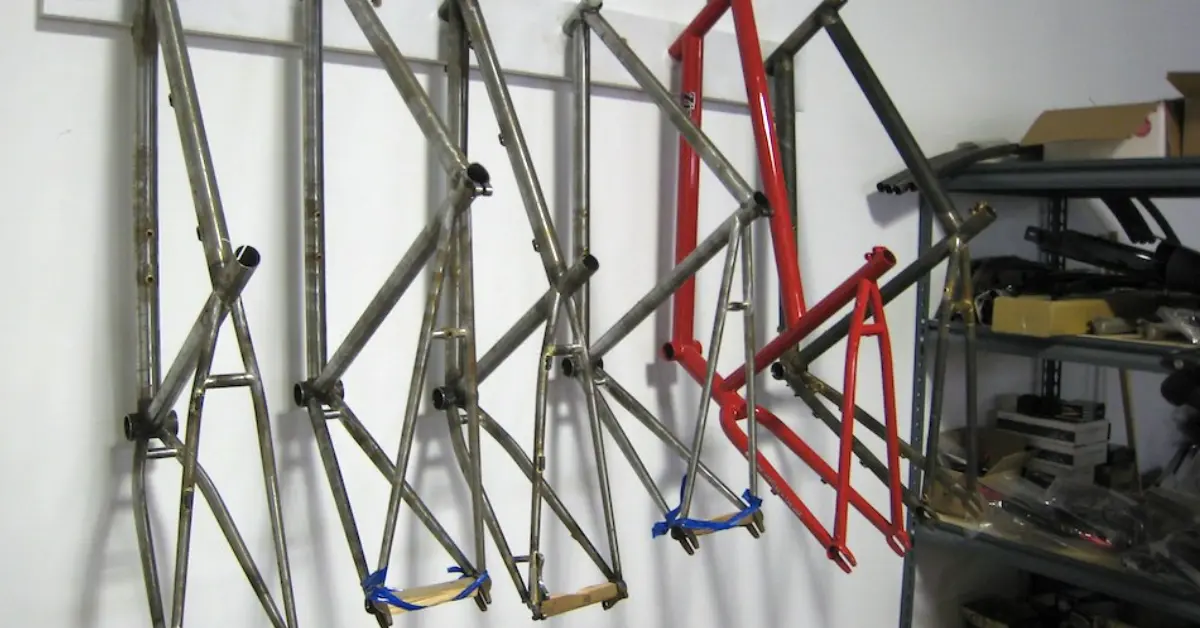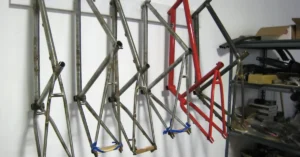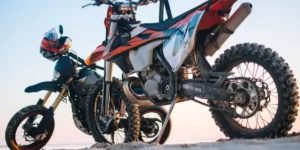Have you ever watched a BMX rider tear down the street and wondered: are BMX bikes fast? Or, how fast are BMX bikes?
Well, on average, a standard BMX top speed is approximately 35mph, whereas mountain bikes are able to hit 30mph, which is slower than the average speed of a BMX bike.
Regarding BMX bikes, speed is sometimes about something other than raw horsepower or breakneck velocity.
It’s about finesse, control, and the perfect balance between power and precision. The elegant nature of these bikes allows riders to navigate tight corners, conquer ramps, and execute awe-inspiring tricks, all while maintaining an impressive pace.
While BMX bikes might not break land speed records, the thrill of speed combined with skill creates an exhilarating experience.
So, are BMX bikes fast? Absolutely, in their electrifying way. Let’s see how!
Table of Contents
ToggleAnatomy Of BMX Bikes
When diving into the world of BMX bikes, understanding the anatomy of these machines is vital to finding your perfect ride.
Starting with the heart of the bike: the frame. Think of it as the backbone, dictating how the bike feels and performs. BMX frames are all about finding that delicate balance between strength and weight.
BMX race bike parts, such as lightweight frames and high-grip tires, enhance speed and maneuverability.
Remember, it’s not just about the frame; there’s a universe of components to consider. Each choice shapes your ride, from wheels and cranks to headsets and handlebars.
Seeking advice while shopping is smart, ensuring you make an informed decision. Whether cruising the streets or aiming for professional glory, the right BMX bike, paired with your passion, will send you to new heights.

Dispelling The Speed Stereotypes
There are various BMX bike stereotypes. Firstly, there’s this widespread misconception that BMX bikes are slow, and often questioned by many: Are BMX bikes fast?
BMX bikes are designed for agility and speed. Their smaller wheel size and lightweight frames make them incredibly handy.
You might wonder: Is a BMX bike faster than a mountain bike? While mountain bikes are fantastic for off-road adventures and can easily handle rough terrains, they’re built for endurance rather than lightning-fast sprints.
On the other hand, BMX bikes are built for short bursts of speed and rapid acceleration. Think of BMX bikes as the sprinters of the biking world because they excel in quick, agile movements.
Exploring BMX Bike Variants
BMX bikes come in multiple styles, each tailored to specific riding preferences.
Freestyle BMX
They often have a sturdy frame and 20-inch wheels, making them highly flexible in skateparks and street ramps.
Freestyle BMX bikes also come with various sprocket sizes, allowing riders to customize their gear ratios for different tricks.
There are various BMX bike sprocket sizes, but a smaller one provides more torque, ideal for quick spins and flips, while a larger sprocket offers higher speeds for jumps and ramps.
Racing BMX bikes
While understanding the “are BMX bikes fast,” you must know that the Racing BMX bikes are optimized for speed and agility on the track.
They usually have a longer top tube and larger wheels, typically 24 inches, providing more stability at high speeds. BMX race bike frames size vary widely to accommodate different rider heights, ensuring a comfortable fit for everyone.
Sprocket sizes in racing BMX bikes are often chosen based on the track layout and the rider’s pedaling style. Balanced acceleration and top speed are crucial for competitive racing.
Dirt Jump BMX
Lastly, the dirt jump BMX is perfect for riders who love catching air on dirt trails and jumps. Dirt jump BMX bikes often come with 26-inch wheels, offering a smooth ride over rough terrain.
Sprocket sizes in dirt jump bikes depend on the rider’s preference and the jumps they plan to tackle.
Riders might opt for a smaller sprocket for quick acceleration or a larger one for more speed on approach ramps.
The world of BMX bikes is incredibly diverse, catering to riders of all styles and skill levels.
Whether you’re a trick enthusiast, a speed demon on the track, or an off-road adventurer, there’s a BMX variant tailored just for you!

Pro BMX Bikes: Pushing the Limits
BMX race bike pro models are engineered for high performance and agility on the racetrack.
These bikes are a marvel of engineering, designed with features that make them agile and responsive.
Most Pro BMX bikes boast lightweight frames from high-quality materials like chromoly steel or aluminum alloy. These materials ensure the manufacturing of the lightest BMX race bike.
When it comes to performance, these bikes are equipped with top-notch components. High-performance tires with deep treads provide:
- Excellent grip on various terrains.
- Allowing riders to take on ramps.
- Dirt tracks.
- Street obstacles with confidence.
In the world of Pro BMX, innovation knows no bounds. Manufacturers continually experiment with new materials, frame geometries, and components to enhance the rider’s experience.
So, whether you’re an aspiring pro or just a BMX enthusiast, these bikes are not just a means of transportation but a ticket to a thrilling, gravity-defying adventure!
Factors Influencing The Answer to “Are BMX Bikes Fast?”
In the exhilarating world of BMX biking, mastering the art of speed is a blend of science, strategy, and finesse.
To answer the question, “Are BMX bikes fast?” Understanding these factors is akin to deciphering a thrilling puzzle, where the right combination can make the difference between a leisurely ride and a high-octane race.
So, these are the dynamic interplay of these factors that shape the speed demons on two wheels!
Gear Ratio
The gear ratio of a BMX bike, determined by the sizes of the front chainring and rear cog, plays a pivotal role in speed.
Higher gear ratios provide more speed but demand more significant pedaling effort, making them suitable for downhill races. Lower gear ratios, conversely, offer easier pedaling, aiding quick acceleration and tricks.
Riders must select the correct ratio based on the specific terrain and their racing or trick preferences.
Tire Pressure
Often overlooked, tire pressure significantly affects BMX speed. Higher tire pressure decreases rolling resistance, enhancing the overall rate.
Whereas excessively high pressure might compromise grip, especially on uneven surfaces. Lower tire pressure increases grip but can lead to a slower ride due to increased resistance.
Rider Technique
The skills and techniques of the rider profoundly impact BMX speed. A rider’s ability to efficiently handle the bike, navigate corners, and time pedal strokes can drastically enhance speed.
Techniques like pumping, where riders use their body movements to generate momentum, and mastering jumps with proper body positioning contribute significantly to speed and control.
Expertise in these techniques enables riders to maximize their bike’s speed potential, making rider skill a crucial factor in BMX performance.

Safety Measures And Precautions
Safety should always ride shotgun when it comes to the exhilarating world of BMX biking. One of the vital safety measures is donning the proper protective gear.
Getting an answer to the question: Are BMX bikes fast? Safety is to be remembered after the speed of the bike.
Your helmet isn’t just an accessory; it’s your best friend on the track. Invest in a sturdy helmet that fits snugly, offering top-notch head protection.
Elbow and knee pads might not be the most extraordinary fashion statement, but trust me, they’re a game-changer.
Moreover, regular bike maintenance is paramount. Check your brakes, tires, and gears before each ride. It’s a quick routine that ensures your bike is in tip-top shape.
Equally important is understanding your limits. Yes, BMX biking is all about pushing boundaries, but it’s equally about knowing when to pause.
Remember, the most epic BMX adventures begin with safety and end with an adrenaline-fueled grin. So, gear up, check your ride, and let the good times roll – safely, of course!
Conclusion
In conclusion, BMX riding offers an exhilarating experience that combines speed, control, and adrenaline-pumping excitement.
The question of “Are BMX bikes fast?” is influenced by various factors. Understanding these elements is crucial in choosing the right BMX bike tailored to your needs and preferences.
By following proper techniques and safety precautions, riders can minimize the risk of injuries and enjoy the thrill of BMX riding.
Moreover, the speed potential of BMX bikes, particularly downhill models, rivals that of road bikes and surpasses that of mountain bikes.
With their versatility and durability, BMX bikes allow riders to explore various terrains. So, strap on your helmet, prioritize safety, and get ready to embrace the speed and excitement of BMX riding.
Now that you’ve got the detailed explanation of “are BMX bikes fast,” you might wonder if adults can ride BMX bikes. I’ve got four reasons why you must!
FAQs
1. Are BMX bikes fast, and are BMX bikes good for commuting?
BMX bikes aren’t ideal for commuting due to their small size, lack of gear, and uncomfortable seating.
For daily commuting, most people prefer bikes with larger frames, gears for varied terrains, and more comfortable features to ensure a smoother and more practical ride.
However, their top speed is 35mph!
2. Can a beginner achieve high speeds on a BMX bike?
Yes, beginners can achieve high speeds with practice, proper techniques, and the right BMX bike.
Starting with the basics, honing your skills, and gradually pushing your limits can help you increase your speed over time.
3. Are BMX bikes comfortable to ride?
BMX bikes are not typically known for their comfort, as they prioritize agility and maneuverability over plush seating.
The design features a more petite frame and compact size, which might be less comfortable for long rides, especially on rough terrain.
However, some riders find them comfortable for their intended purpose.
4. Why are BMX bikes so small?
BMX bikes are small to enhance control and agility, which is crucial for tricks and racing on challenging terrains.
Their compact size allows riders to perform stunts efficiently and navigate tight spaces, defining the bike’s purpose in extreme sports and competitions.

